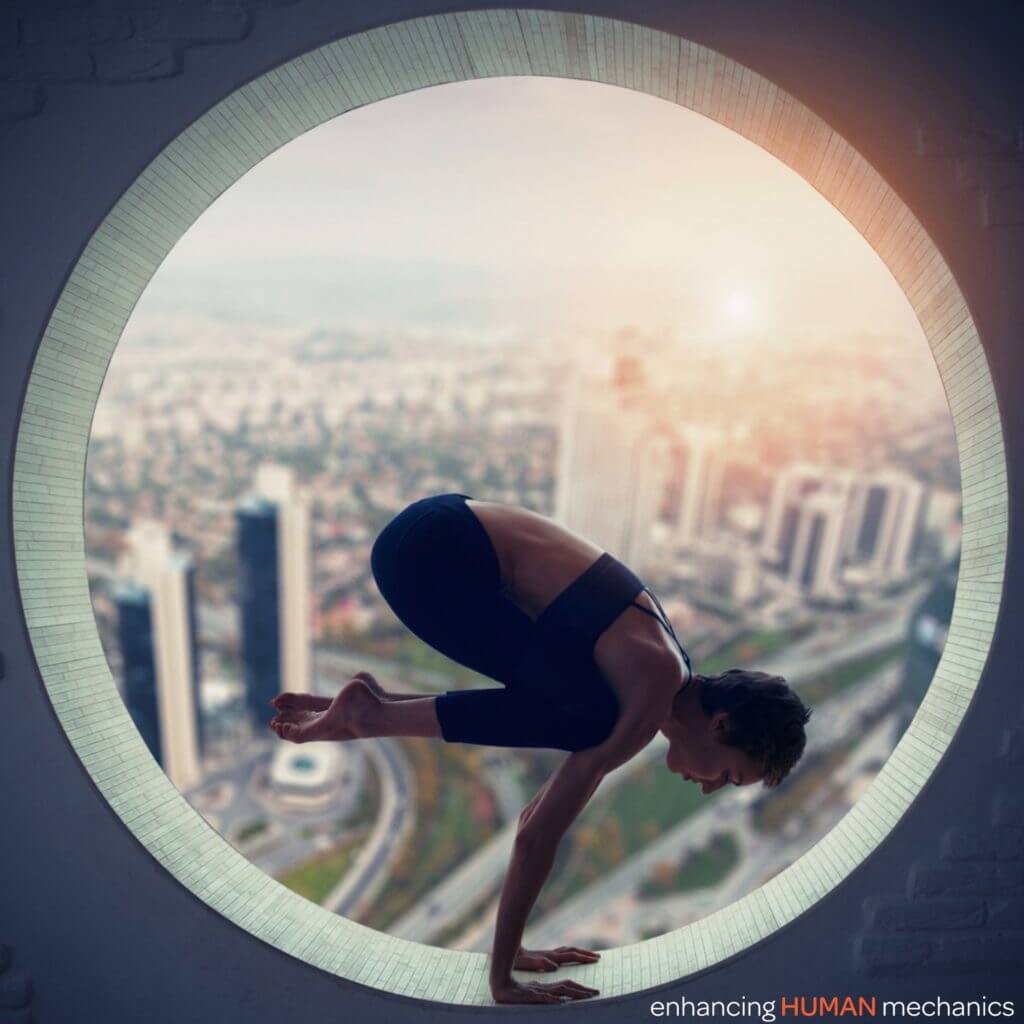How do you produce efficiency of movement? It all starts with postural control.
Postural control involves the vestibular system, vision, and proprioception. From these three systems there is back and forth communication with the brain and the body to produce stability or mobility.
Postural control happens when you find and control the center of mass or where you feel the weight of your body within a base of support. The single leg stance (SLS) is a great starting place. During a SLS you have a limited base of support from which to control the center of mass, but you can use a limited number of muscles or a collection of musculature to create that balance. When the center of mass is aligned within a base of support and you utilize a collection of musculature you have efficiency of postural control because the load is equally distributed along the joints and muscles.
Newton’s third law of equal and opposite forces comes into play as ground reaction forces transfers the weight of the body back up. Therefore, the human body has the ability to transfer energy from one joint to the next. This passive transfer of energy across joints generally absorbs 60-70% of forces equally in double legged stance. Much of this efficient absorption of energy is lost during gait as you are required to transition back and forth from double legged stance to single leg stance. If one joint’s center of mass is not aligned within the base of support, forces are directed to that joint because now there is not equal distribution of weight.
Fortunately, one method to reduce this break down of efficiency during gait is through an efficient push off. Using equal and opposite forces from the ground up to propel the body’s weight from the back leg to the front leg can reduce energy lost by 75%. Doing so requires a coordination of posture and movement to produce dynamic control. This is efficiency of movement! Controlling your center of mass within a base of support during static or dynamic movements results in efficient distribution of weight and muscle activation.
Having poor control and lack of efficient movement could lead to other functional limitations. Does this sound like you? If so, contact Body Gears today to schedule your Free Screen!
Sousa ASP, Silva A, Tavares JMRS. Biomechanical and neurophysiological mechanisms related to postural control and efficiency of movement: A review. Somatosensory & Motor Research. 2012;29(4):131-143. doi:10.3109/08990220.2012.725680.
Authored By: Dr. Esther Kim PT, DPT
If you liked this article please give us feedback and join the conversation. We would love to hear your suggestions on other science, anatomy, or movement topics you’d like to learn more about! Find us on Facebook, Instagram, and Twitter @BodyGearsPT






